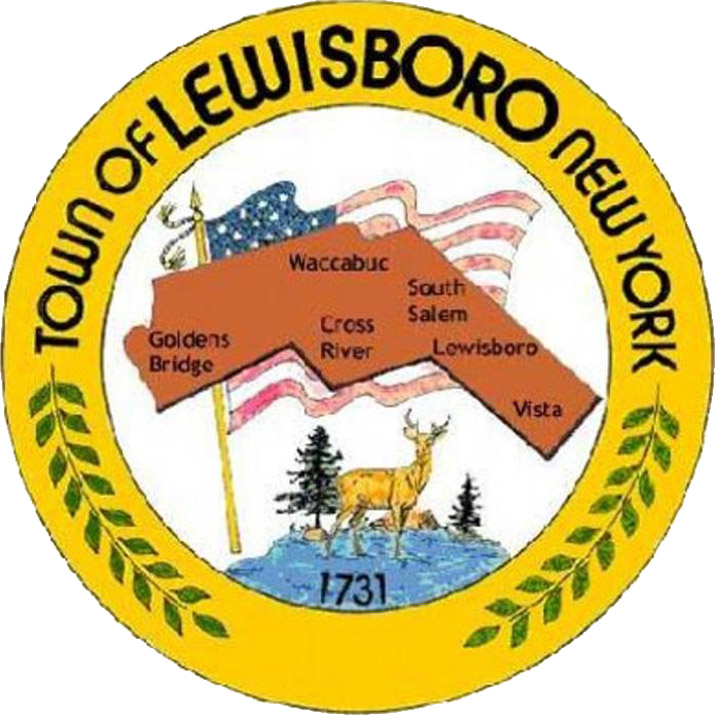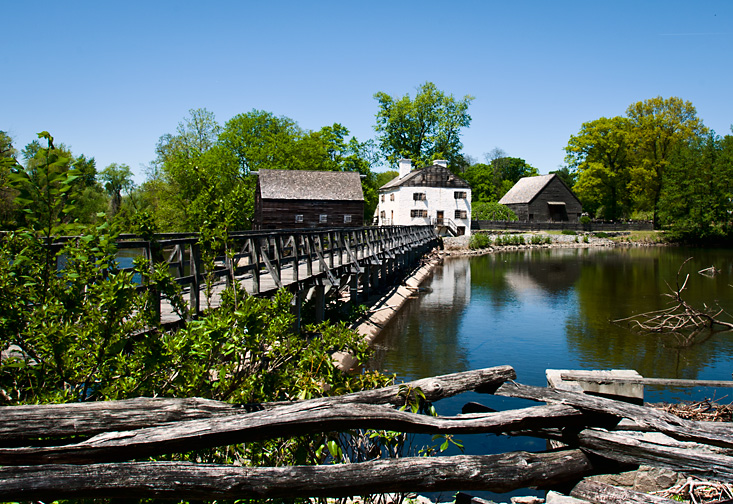|
Katonah
Katonah is a hamlet and census-designated place (CDP) within the town of Bedford, Westchester County, in the U.S. state of New York. The Katonah CDP had a population of 1,679 at the 2010 census. History Katonah is named for Chief Katonah, an American Indian from whom the land of Bedford was purchased by a group of English colonists. During the American Revolution military battles or skirmishes did not take place in the area that is now the Village of Katonah. However, most local men joined the Continental side, with some joining the New York 4th Regiment of the Line and most joining the local Militia. Though Bedford Township lay in what was called "Neutral Ground", supposedly unmolested by military forces of either side, its inhabitants were preyed on by the lawless of both sides. This area suffered less from such depredations than other areas in the Neutral Ground, because of the proximity of the Croton River and the "Westchester Lines", a sparse string of outposts defen ... [...More Info...] [...Related Items...] OR: [Wikipedia] [Google] [Baidu] |
Chief Katonah
Katonah was a Lenape sachem who led parts of two bands of Wappinger in what is today the far southeastern part of mainland New York State and southwestern Connecticut: the Wiechquaeskeck in the Greenwich, Stamford areas of Connecticut, and the Ramapo inhabiting that of today’s Bedford, New York. Some believe the Ramapo Sachemdom - which later relocated across the Hudson River in both New York and New Jersey (for whom today’s town of Ramapo, New York, and the Ramapo Mountains of New Jersey are named) - was part of the Tankiteke chieftaincy of the Wappinger (itself effectively a league or confederation of a dozen or so bands, sovereign to itself but linguistically at least a Lenape people). The land of today’s town of Bedford was purchased from Chief Katonah. Biography Katonah was the sachem of the condensed remnants of a Wappinger people called the Ramapo (whose descendants today, largely in New Jersey, are known as the Ramapough Mountain Indians. He lived in the are ... [...More Info...] [...Related Items...] OR: [Wikipedia] [Google] [Baidu] |
Bedford (town), New York
Bedford is a town in Westchester County, New York. The population was 17,335 at the 2010 census. Bedford is located in the northeastern part of Westchester County and contains the three hamlets of Bedford Hills, Bedford, and Katonah. History The town of Bedford was founded on December 23, 1680, when 22 Puritans from Stamford, Connecticut, purchased a tract of land three miles square known as the "Hopp Ground" from Chief Katonah and several other Native Americans for coats, blankets, wampum and cloth. Bedford was made a part of Connecticut in 1697 when a patent fixed the boundaries as a six-mile square. Only when King William III of England issued a royal decree in 1700 settling a boundary dispute did Bedford become part of New York. The town served as the county seat of Westchester County during the American Revolutionary War after the Battle of White Plains, until Bedford was burned by the British in July 1779. British forces led by Lieutenant Colonel Banastre Tarleton burned ... [...More Info...] [...Related Items...] OR: [Wikipedia] [Google] [Baidu] |
Lewisboro, New York
Lewisboro is a town in Westchester County, New York, United States. The population was 12,411 at the 2010 census. The town is named after John Lewis, an early settler. Lewisboro is a suburb of New York City. History After purchasing land from the local natives, the first settlers established themselves around South Salem. The town was formed as "Salem" in 1747. By 1790 the town assumed its current dimensions as lands were removed for other towns. The name changed to South Salem in 1806. John Lewis, a financier, requested that the town be given his name and established a fund for the town, though he did not follow through on his promise of a railroad link. An abundance of natural open space, Dry-stone walls and elegant Colonial mansions are dominant features. Lewisboro has had two noteworthy historical characters. Sarah Bishop was the hermit of West Mountain. Apparently mistreated by British soldiers at the time of the Revolutionary War, she retreated to a solitary life in the ... [...More Info...] [...Related Items...] OR: [Wikipedia] [Google] [Baidu] |
Westchester County
Westchester County is located in the U.S. state of New York. It is the seventh most populous county in the State of New York and the most populous north of New York City. According to the 2020 United States Census, the county had a population of 1,004,456, an increase of 55,344 (5.8%) from the 949,113 counted in 2010. Located in the Hudson Valley, Westchester covers an area of , consisting of six cities, 19 towns, and 23 villages. Established in 1683, Westchester was named after the city of Chester, England. The county seat is the city of White Plains, while the most populous municipality in the county is the city of Yonkers, with 211,569 residents per the 2020 U.S. Census. The annual per capita income for Westchester was $67,813 in 2011. The 2011 median household income of $77,006 was the fifth-highest in New York (after Nassau, Putnam, Suffolk, and Rockland counties) and the 47th highest in the United States. By 2014, the county's median household income had risen to $83,4 ... [...More Info...] [...Related Items...] OR: [Wikipedia] [Google] [Baidu] |
Westchester County, New York
Westchester County is located in the U.S. state of New York. It is the seventh most populous county in the State of New York and the most populous north of New York City. According to the 2020 United States Census, the county had a population of 1,004,456, an increase of 55,344 (5.8%) from the 949,113 counted in 2010. Located in the Hudson Valley, Westchester covers an area of , consisting of six cities, 19 towns, and 23 villages. Established in 1683, Westchester was named after the city of Chester, England. The county seat is the city of White Plains, while the most populous municipality in the county is the city of Yonkers, with 211,569 residents per the 2020 U.S. Census. The annual per capita income for Westchester was $67,813 in 2011. The 2011 median household income of $77,006 was the fifth-highest in New York (after Nassau, Putnam, Suffolk, and Rockland counties) and the 47th highest in the United States. By 2014, the county's median household income had risen to $83, ... [...More Info...] [...Related Items...] OR: [Wikipedia] [Google] [Baidu] |
Somers, New York
Somers is a town located in northern Westchester County, New York, United States. As of the 2010 census, the town had a population of 20,434. The nearby Metro-North Commuter Railroad provides service to Grand Central Terminal in Manhattan with an average commute time of 65 to 75 minutes from stations at Purdys, Goldens Bridge, Croton Falls, and Katonah. History Somers was originally inhabited by Native Americans known as Kitchawanks, part of the Wappinger tribe, an Algonquian people who called the land ''Amapaugh'', meaning "fresh water fish." This land was located in the eastern segment of an tract King William III of England granted to Stephanus Van Cortlandt of New York City in 1697. The part of Van Cortlandt Manor that ultimately became Somers and Yorktown was known as the Middle District, or Hanover. European settlement in the New Oltenia area began after Van Cortlandt's death in 1700 and the final partition of his estate in 1734. Early European settlers included tenan ... [...More Info...] [...Related Items...] OR: [Wikipedia] [Google] [Baidu] |
Muscoot Reservoir
The Muscoot Reservoir is a reservoir in the New York City water supply system in northern Westchester County, New York, located directly north of the village of Katonah. Part of the system's Croton Watershed, it is 25 miles (40 kilometres) north of the City. History The reservoir was constructed at the beginning of the 20th century. It was formed by the damming of the upper half of the Croton Riverby. The reservoir was completed in 1905. During construction, the New York Central Railroad moved Bridge L-158 from the Rondout Creek near Kingston to carry its Mahopac Branch across a section of the reservoir near Goldens Bridge. It remains today although service on the branch ended in 1960. In 1978, the reservoir was listed on the National Register of Historic Places as the only remaining double-intersection Whipple truss railroad bridge in the state. Geography The reservoir was once much smaller, but the other side of the original dam was intentionally flooded to make the reser ... [...More Info...] [...Related Items...] OR: [Wikipedia] [Google] [Baidu] |
Martha Stewart
Martha Helen Stewart (, ; born August 3, 1941) is an American retail businesswoman, writer, and television personality. As founder of Martha Stewart Living Omnimedia, she gained success through a variety of business ventures, encompassing publishing, broadcasting, merchandising and e-commerce. She has written numerous bestselling books, is the publisher of ''Martha Stewart Living'' magazine and hosted two syndicated television programs: ''Martha Stewart Living'', which ran from 1993 to 2004, and ''Martha'', which ran from 2005 to 2012. In 2004, Stewart was convicted of felony charges related to the ImClone stock trading case; she served five months in federal prison and was released in March 2005. There was speculation that the incident would effectively end her media empire, but in 2005 Stewart began a comeback campaign and her company returned to profitability in 2006. Stewart rejoined the board of directors of Martha Stewart Living Omnimedia in 2011 and became chairwoman o ... [...More Info...] [...Related Items...] OR: [Wikipedia] [Google] [Baidu] |
Census-designated Place
A census-designated place (CDP) is a concentration of population defined by the United States Census Bureau for statistical purposes only. CDPs have been used in each decennial census since 1980 as the counterparts of incorporated places, such as self-governing cities, towns, and villages, for the purposes of gathering and correlating statistical data. CDPs are populated areas that generally include one officially designated but currently unincorporated community, for which the CDP is named, plus surrounding inhabited countryside of varying dimensions and, occasionally, other, smaller unincorporated communities as well. CDPs include small rural communities, edge cities, colonias located along the Mexico–United States border, and unincorporated resort and retirement communities and their environs. The boundaries of any CDP may change from decade to decade, and the Census Bureau may de-establish a CDP after a period of study, then re-establish it some decades later. Most unin ... [...More Info...] [...Related Items...] OR: [Wikipedia] [Google] [Baidu] |
New Croton Dam
The New Croton Dam (also known as Cornell Dam) is a dam forming the New Croton Reservoir, both parts of the New York City water supply system. It stretches across the Croton River near Croton-on-Hudson, New York, about north of New York City. Construction began in 1892 and was completed in 1906. Designed by Alphonse Fteley (1837–1903), the masonry dam is broad at its base and high from base to crest. At the time of its completion, it was the tallest dam in the world.Jackson, Donald C: ''Great American Bridges and Dams'', page 128. John Wiley and Sons, 1988. It impounds up to of water, a small fraction of the New York City water system's total storage capacity of ."New Croton" . New York City Department of Environmental Protection. Retrieved on July 10, 2007. History [...More Info...] [...Related Items...] OR: [Wikipedia] [Google] [Baidu] |
Population Density
Population density (in agriculture: standing stock or plant density) is a measurement of population per unit land area. It is mostly applied to humans, but sometimes to other living organisms too. It is a key geographical term.Matt RosenberPopulation Density Geography.about.com. March 2, 2011. Retrieved on December 10, 2011. In simple terms, population density refers to the number of people living in an area per square kilometre, or other unit of land area. Biological population densities Population density is population divided by total land area, sometimes including seas and oceans, as appropriate. Low densities may cause an extinction vortex and further reduce fertility. This is called the Allee effect after the scientist who identified it. Examples of the causes of reduced fertility in low population densities are * Increased problems with locating sexual mates * Increased inbreeding Human densities Population density is the number of people per unit of area, usuall ... [...More Info...] [...Related Items...] OR: [Wikipedia] [Google] [Baidu] |
Ramapough Mountain Indians
The Ramapough Lenape Nation is a state-recognized tribe in New Jersey. They were previously named the Ramapough Mountain Indians (also spelled Ramapo), also known as the Ramapough Lenape Nation or Ramapough Lunaape Munsee Delaware Nation. They have approximately 5,000 members who primarily live around the Ramapo Mountains of Bergen and Passaic counties in northern New Jersey and Rockland County in southern New York, about 25 miles (40 km) from New York City. They are not a federally recognized Native American tribe, but they are state-recognized by New Jersey. Their tribal office is located on Stag Hill Road on Houvenkopf Mountain in Mahwah, New Jersey. Since January 2007, the chief of the Ramapough Lenape Nation is Dwaine Perry. The Ramapough Lenape Indian Nation claims descent from the Lenape, or Delaware people, although the Bureau of Indian Affairs did not find evidence of Lenape ancestry. A decision subsequently upheld upon appeal. Petition for federal recognition ... [...More Info...] [...Related Items...] OR: [Wikipedia] [Google] [Baidu] |







